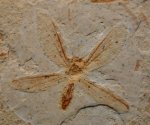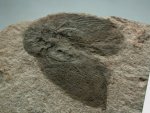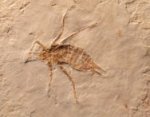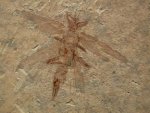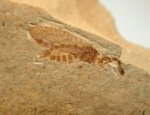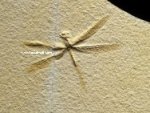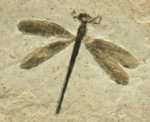Insect Fossils
Insect
Fossils
|
Fossil
Insects
|
|||||||||||||||||||||
| Visit these fossil dealer shops currently stocking insect fossils: About Insect Fossils
Fossilization
of insects is relatively rare event, normally needing anoxic
conditions (without oxygen
and lacking aerobic
bacteria) such as occur in silty lake bottoms. Exquisite
insect fossils are particularly known from Lagerstätte
sites such as the Eocene Green River formation and Carboniferous
Mazon Creek in the US, Class Insecta has nonetheless left a prodigious insect fossil record owing to their tremendous reproduction rate. Their fecundity is a powerful evolutionary mediator, fostering rapid adaptation and survival during those geological periods of rapid change known as extinction events. The oldest insect fossil is Rhyniognatha from the Rhynie Chert of Scotland that is estimated to be some 400 million years old. Because it already had mandibles, a prominent characteristic of winged insects, it has been inferred that first insects likely appeared much earlier during the Silurian. |
||||||||||||||||||||||
Learn
more about insect
fossils in
the Fossil Science Section |
||||||||||||||||||||||
|
Fossil Mall Navigation: Navigate
by Fossil Category: |
||||||

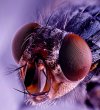 Modern
insects are among the most diverse of animals, with more
than million species described and represent more than half
of all known eukaryotic organisms. The actual number of extant
species is estimated at between six and ten million, and
occupy essentially all
Modern
insects are among the most diverse of animals, with more
than million species described and represent more than half
of all known eukaryotic organisms. The actual number of extant
species is estimated at between six and ten million, and
occupy essentially all 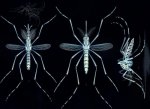 terrestrial Insects, and have even
adapted to multiple environmental niches during their complex
developmental life cycles.
terrestrial Insects, and have even
adapted to multiple environmental niches during their complex
developmental life cycles. 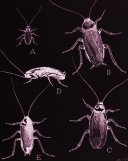 the Cretaceous Liaoning Province in
China and Crato Formation of Brazil, and the Jurassic Solnhofen
Limestone of Germany. Like other Arthropods, insects have
an
external skeleton called an exoskeleton, but it is thin and
composed of chitin, along with a tough protein that poorly
fossilizes.
the Cretaceous Liaoning Province in
China and Crato Formation of Brazil, and the Jurassic Solnhofen
Limestone of Germany. Like other Arthropods, insects have
an
external skeleton called an exoskeleton, but it is thin and
composed of chitin, along with a tough protein that poorly
fossilizes. 